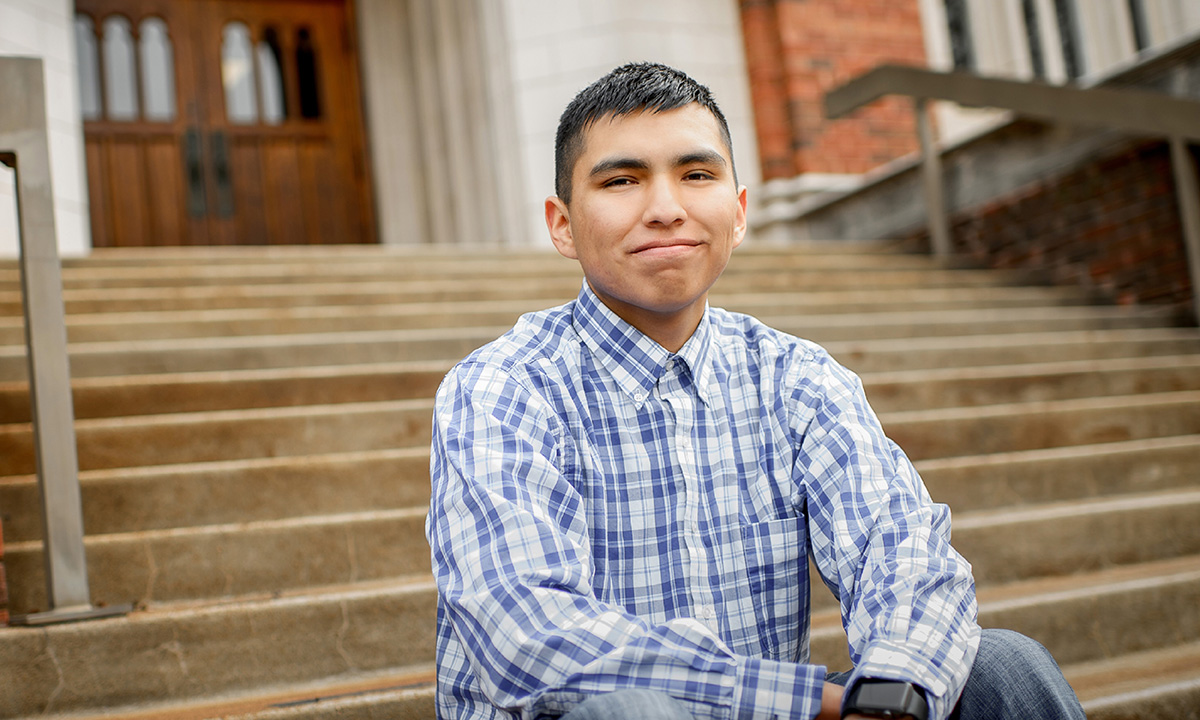New Study Details Challenges Facing Native Students, and How to Address Them
Albert: From funding for tuition to housing, food aid and financial literacy training, what schools can do to make education truly affordable

Get stories like this delivered straight to your inbox. Sign up for The 74 Newsletter
The uncertain fate of President Joe Biden’s plan to cancel up to $20,000 in federal student loan debt for tens of millions of Americans is a serious cause for concern in Indian Country, where college affordability remains one of the greatest hurdles to economic mobility. Because of the steep cost of higher education, many young Indigenous people have to choose between pursuing a college degree and keeping food on the table or a roof over their heads.
A newly released National Study on College Affordability for Indigenous Students brings much-needed visibility to this disparity, which has long been ignored in the public dialogue about educational access. The report provides comprehensive data and a fresh set of powerful personal testimonies that illuminate how Native students experience the many facets of funding their college education. It offers recommendations for making higher education more financially accessible to Native students, such as providing aid for non-tuition expenses.
Indigenous researchers collected information from nearly 3,000 students (a 23.2% response rate). These students represent 172 Tribal nations. This Indigenous-led data sharing, collection, analysis and reporting — an unprecedented collaboration among the nation’s four Native scholarship providers — found that college affordability, not academic performance or any other factor, is the primary obstacle preventing Native students from earning their degree. Simply put: Of the Native students who do not complete their college studies, most stop because they simply do not have enough money to keep going.
It has long been known that Native students are far less likely than U.S. students overall to graduate from college. Past research has shown that 36% of Indigenous undergraduates entering four-year colleges and universities in 2014 completed their academic degrees in six years, compared with 60% of all other students.
The new study goes deeper, painting a more detailed portrait of the financial challenges facing Native students. For example, it found that 72% reported running out of money at least once in the previous six months. Many Native students report making sacrifices that no student should have to make — such as not eating in order to have enough money for education-related expenses. Over 50% said they struggled with food insecurity, and 16% experienced homelessness while pursuing their degrees.
Examining the underlying reasons for these financial challenges, the report found that Native students shoulder tremendous financial responsibilities. Many are the breadwinners for their families. Almost 50% of respondents in the survey agreed that they served as the primary source of income for their household during college. More than two thirds said they are expected to contribute to family bills.
As a member of the Confederated Salish & Kootenai Tribes growing up in Montana, I experienced many of these same hardships when I attended college two decades ago. Now, as a scholarship provider, I hear each year from students enduring food insecurity and homelessness. Native Forward helps these students, providing them not just with funding for tuition, but also with housing, food aid and other forms of critical support.
What I fear is that 20 years from now, students will still be coming to us for emergency relief. Meanwhile, the higher education system will not have evolved to meet their needs.
The report’s findings can empower colleges and universities to chart a different course — one that provides Native students with the resources and support they need to make higher education truly affordable. In my conversations with financial aid officers across the country, I’ve found that few have meaningful data on Native students’ financial literacy or challenges. Armed with the treasure trove of statistics in this study, financial aid staff can finally begin to develop expertise around Native students’ experiences in paying for their education. Universities can then develop data-informed strategies to better meet these students’ needs.
The report also urges secondary schools to do more to equip Native students to navigate the costs of higher education, such as strengthening financial literacy school curricula and pre-college financial planning, and expanding information and planning for families, caregivers and students around filling out the Free Application for Federal Student Aid (FAFSA).Year after year, Native Forward sends the majority of its funding to students enrolled at a small group of colleges and universities. This is because those schools excel at supporting this student population. Now, it’s time for more schools to follow their examples. With the study as a new baseline, all those who support Native students, from colleges to policymakers to philanthropists, can take informed action and create the institutional change that will finally achieve full equity and opportunity for Native students.
Get stories like these delivered straight to your inbox. Sign up for The 74 Newsletter

;)
